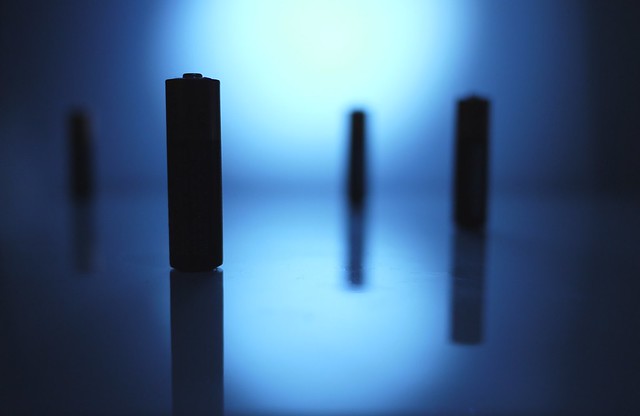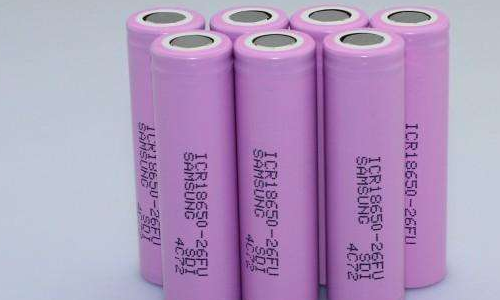The Science Behind Lithium Ion Battery: Chemical Equation!
Nov 29, 2019 Pageview:1030
In about 1912, a scientist named G. W. Lewis started working on batteries that were powered by lithium. This was when the concept came into being. However, they were not formally introduced until the early 1970s. The anode in these batteries is made up of Lithium.
They have a long-lasting life but they also generate a higher cost per unit. There are six different types of Lithium-ion used in different batteries. All of them have their own set of pros and cons. However the best suited is Lithium Iron Phosphate (LiFePO4). This electrode is safe to use and is tolerant of abuse. This also provides a long life and great thermal balance. They are usually used in handheld devices. The other electrode used in these batteries is made up of graphite. Their high-density charge sets them apart from the alkaline batteries. They can produce a high voltage of 1.5V to almost 3.7V. The voltage is lithium dependent. The main deciding factor of the volt is the quality of Lithium-ion used and the designing of the battery. We will discuss the chemical equations used in lithium batteries further in this article.
There are millions of applications of Lithium-ion batteries. Most common out of which are in the field of medicine. They are also used in personal assistants. The use of lithium-ion batteries is endless. Such as PDAs, blood pressure/ diabetes meters and many other portable devices. When compared to the alkaline batteries these batteries are higher in cost. But the bonus of a long life makes them worth the few extra dollars that we have to pay. They can also be reconditioned and are long-lasting.
The bonus of Lithium battery is that it does not poof out harmful gases, like oxygen and hydrogen. Also, Lithium batteries boost a strong molecular bond among their ions. Which gives them the signature long life and thermal balance. These batteries can house energy equal to almost three or four alkaline batteries. Yet it is portable and compact. This gives it an edge over the other available batteries.
So the main question is how such a small battery houses such a big powerhouse within itself. The answer is fairly simple. A lithium-ion battery has complex chemical equations backing it up. Let’s try to understand these equations better in the next heading.
What is the chemical reaction in a lithium ion battery?
Lithium-ion batteries have Lithium [Li+] ions in them. They are involved in all the reactions in the lithium-ion batteries. There are two electrodes in all types of batteries. Called as anode and cathode. In a lithium-ion battery both the electrodes are made of materials that can easily intercalate lithium ions. This means that both the electrodes present in the lithium-ion battery should be built of materials that can absorb lithium ions.
In simple terms, intercalation means to hold charged ions inside a material without disturbing the properties of the ions. One thing to note here is that the host material should not disturb the properties of the ion.
When we are talking about a lithium-ion, the ions are connected to an electron within the confines of an anode. When the battery gets discharged, the absorbed ions are released from the anode. And then the lithium ions swim towards the cathode through the electrolyte.
The lithium-ion battery starts its full life cycle from being discharged. The lithium ions are all intercalated in the cathode and its chemistry is not advanced enough to produce electricity on its own. Hence this is why you need to charge a battery completely before using it. As soon as the battery gets charged, oxidation occurs at the cathode and this is the reason why it loses some of its charged ions. Now the negative ions are in abundance in the electrolyte. To maintain an equilibrium, some positively charged intercalated lithium ions are released in the electrolyte. All these ions then travel towards the anode and intercalate with the graphite.
When the battery starts to get discharged, the lithium ions reverse the entire process that is described above. All the lithium ions de-intercalate from the anode and make their way towards the cathode through the electrolyte. This reaction releases the electrons that were tied with the anode. This produces an external wire of energy that enables the battery to perform actual work. Here when the electrons are traveling all negative and positive ions get balanced with the movement.
When all the ions return to the cathode, all the reactions come to a halt. And the battery gets discharged and gets flat. When we recharge the battery the entire process starts once again and the battery starts generating power.
What is the formula of a lithium ion battery?
The reactions taking place inside a lithium-ion battery are not very complex. But they are not very easy at the same time. The most famous ion used inside a lithium-ion battery is Lithium Cobalt ion (LiCoO2).
The reactions taking place inside in a battery with LiCoO2 ion cathode and a graphite anode are as follows:
LiCoO2 + C ? Li1-xCoO2 + LixC
The double arrows here represents the reversible reaction. The forward arrow indicates the charging and the backward arrow indicates discharging.
The reaction that occurs at positive electrode:
LiCo3+O2 ? xLi+ + Li1-xCo4+xCo3+1-xO2 + e-
The reaction that occurs at the negative electrode:
C + xLi+ + e- ? LixC
How a lithium ion battery is made?
The formation of Lithium ion batteries has the following steps:
The first thing to do prepare the things that make up an electrode.
The second step is to convert the raw materials into an actual electrode.
Then the formation of an electrolytes takes place.
The ions are then charged.
All the components of a battery are then put together to form a battery.
The battery is then covered with cylindrical coverings.
The battery is then tested for safety.
- Prev Article: Lithium Ion Battery Disposal Environmental Impact
- Next Article: Where Can I Dispose Of Lithium-ion Batteries?
Leave Message
Hottest Categories
-
Hottest Industry News
-
Latest Industry News













